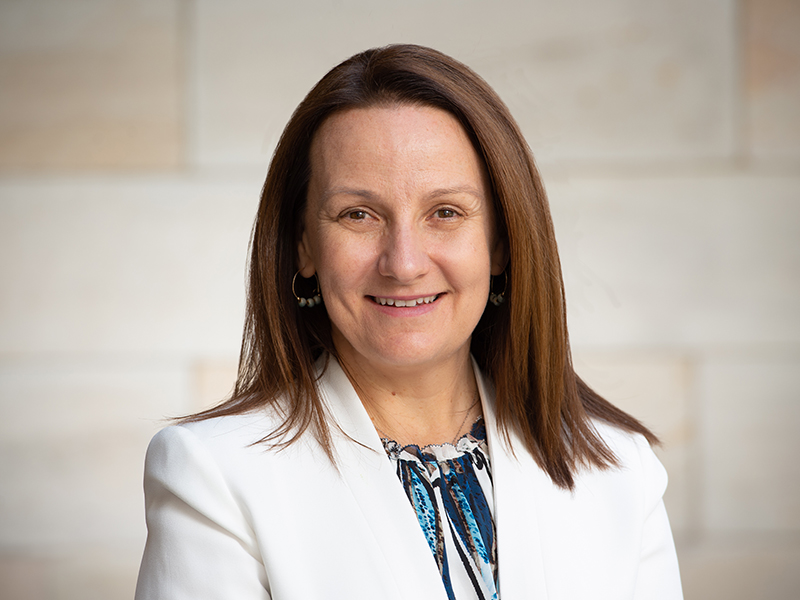The Queensland government unveiled the first ever whole-of-government science strategy in July, with an aim of positioning the state as a global science powerhouse.
This is also the goal of Professor Kerrie Wilson, who was appointed as the state’s chief scientist late last year.
The Future Queensland Science Strategy 2024-2029 is a framework for support and investment in science and scientists in the state, and lists five strategic priority pillars: Talent, Infrastructure, Partnerships, Translation and Community.
For Professor Wilson, the fact that it is a whole-of-government strategy is crucial to its success.

“My hope is that we move towards an investment strategy for government that cuts across each of those ingredients, each of those pillars, and that’s where the future work will lie, regardless of who’s in government,” Professor Wilson told InnovationAus.com.
The state’s science strategy aims to “leverage Queensland’s scientific strengths to capitalise on opportunities in dynamic scientific fields such as renewable energy, climate change mitigation, and quantum and advanced technologies”.
It serves to complement the existing Queensland Quantum and Advanced Technologies Strategy and the Advance Queensland Innovation for a Future Economy 2022-2032 Roadmap.
A key initiative for achieving this is the establishment of an interdepartmental science committee covering all state agencies at the deputy director-general level.
“We now have a working network across all of our agencies to implement the strategy and this effectively provides a vehicle for future investment,” Professor Wilson said.
The circular economy is another area that requires a whole-of-government approach.
“At first thought, you think, ‘is this just another kind of buzzword?’” she said.
“But it’s clearly not. It’s absolutely critical for driving a lot of our government priorities and policies, and ultimately for humanity, because if we don’t get these settings right, we will be continuing on a path of unsustainability.
“It is really cross-cutting, and it’s going to take engagement from households through to research and innovation and government settings in order to really embed circular economy thinking into everything that we do.”
The circular economy — where materials are reused, recycled or further remanufactured — cuts across a range of government departments and policies.
At a federal level, the Ministerial Advisory Group on the Circular Economy unveiled an interim report in April, recommending the development of a national circular economy framework, the introduction of national targets and indicators and that the Productivity Commission be tasked with investigating how resource efficiency supports economic growth and productivity.
Circular economy hubs are being set up across Queensland, with a focus on industry, research and government partnership. A circular economy initiative in Townsville was announced by the Queensland government in November last year, providing information and support for local businesses looking to embed circular economy principles into their day-to-day operations.
These hubs are underpinned by initiatives stemming from Queensland’s Waste Management and Resource Recovery Strategy, which aims to move the state away from the “take-make-waste” model to a circular economy that “designs out waste and pollution, circulates products and materials at their highest value, and regenerates the environment”.
“Importantly, they are not just prioritising it in our capital city, but they’re doing it in regional centres as well,” Professor Wilson said.
“We’ve got hubs in Townsville, Mackay and Toowoomba, and they’re really about identifying ideas for new solutions and establishing innovation precincts effectively in order to implement those.”
Queensland already has a strong foundation in science and research, she said, but the state cannot begin to idle in the space.
“Queensland is starting from a high base…but we run the risk of becoming latent and lazy, and therefore the reinvigoration is a constant goal – to remind everyone of the importance of science,” Professor Wilson said.
Before being named chief scientist, Professor Wilson was the pro vice-chancellor (Sustainability and Research Integrity) at the Queensland University of Technology (QUT), and the executive director of the QUT Institute for Future Environments.
Another key initiative launched by the chief scientist is the Queensland Science Gateway, which gives the opportunity for members of the state’s research sector to present to the decision-makers in government about their forthcoming proposals for which they are seeking support and funding.
“It provides a front door for the research sector into government,” Professor Wilson said.
“It also helps our government colleagues reduce the churn of researchers shopping around within government.
“It’s great because you’re getting that cross-agency collaboration and partnership underway, and these teams can then with confidence proceed with putting forward their propositions to the funding agency.”
There are now plans to extend this program, which will be convened two or three times per year.
This article was produced by InnovationAus.com in partnership with Something Fest. InnovationAus.com is hosting a Circular Economy and Sustainability in Queensland as part of SomethingQ in Brisbane on 26 August. You can reserve you seat here.
Do you know more? Contact James Riley via Email.
